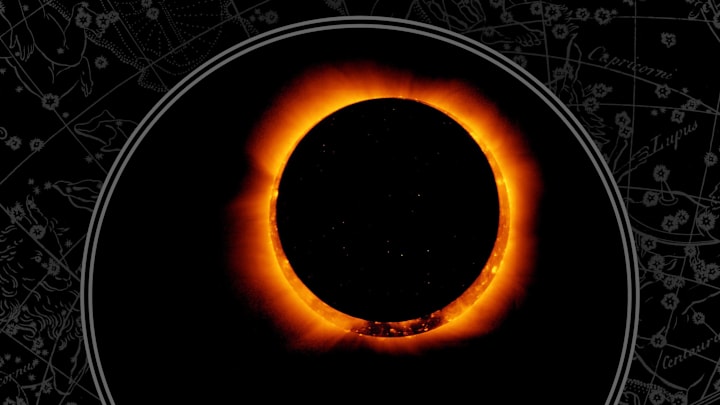If you keep up with celestial events, you may already know that there’s more than one type of eclipse. On October 14, you can look up to catch an annular solar eclipse, often called a “ring of fire” because the moon does not completely cover the sun. Here’s what you should know to make sure you don’t miss it.
What Is an Annular Eclipse?
During a total solar eclipse, the moon blocks the entire sun and casts its shadow across Earth, called the path of totality. To people watching from Earth, the sun’s light appears temporarily extinguished. But in an annular solar eclipse, as the moon passes between Earth and the sun, the sun’s outer edge remains visible at all times. This results in a dazzling ring of light circling the silhouette of the moon.
The differences in the eclipses come down to the moon’s distance from Earth. When the moon is farther away from our planet, it obscures less of the sun during a solar eclipse. The moon needs to be relatively close to our planet to create a total solar eclipse like the one we witnessed in North America in 2017 and the next one we’ll be able to see, occurring in April 2024.
How to See the Annular Eclipse in October

The full “ring of fire” effect will be visible to people the western U.S., Central America, and upper South America during the eclipse on October 14. In North America, the full annular eclipse begins at 9:13 a.m. Pacific in Oregon and concludes at 12:03 p.m. Central in Texas. Partial effects of the eclipse will be visible for some time along the path of totality leading up to and following the peak.
Like any solar eclipse, you will need protective glasses to look at the partial or annular solar eclipse directly. Here are more tips for safely viewing an eclipse.
A version of this story ran in 2021; it has been updated for 2023.
